
Botox
All of us eventually must deal with lines and wrinkles associated with aging
→ read more

All of us eventually must deal with lines and wrinkles associated with aging
→ read more

All of us eventually must deal with lines and wrinkles associated with aging. However, there is a great way to diminish the appearance of these wrinkles by using Botox treatments. Botox injections do more than simply paralyze facial muscles to create a more youthful appearance. New research suggests the anti-aging treatments may also turn back the clock on facial skin itself, aiding its ability to stretch and recoil.
Ask us about how you can obtain a more youthful appearance today.
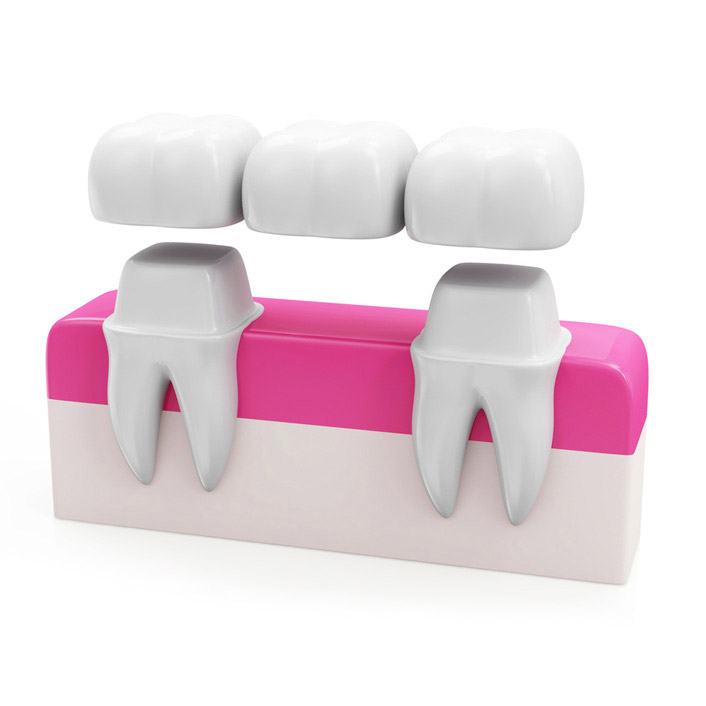
A bridge is an ideal method to fill the space created by missing teeth. A bridge is one or more artificial teeth
→ read more

A bridge is an ideal method to fill the space created by missing teeth. A bridge is one or more artificial teeth that are cemented into place using the real teeth on either side for support--hence the name. Bridges are a perfect option for filling the space created by a missing tooth. A bridge replaces the missing tooth both functionally and cosmetically. Bridge work is as much an art as it is an exact science. Bridge materials include gold alloys, porcelain bonded to metal alloy, or all-ceramic material made to match your natural tooth color. The choice of material depends on requirements for strength, wear, and/or aesthetics.

Crowns are used to restore and enhance teeth that are damaged, or to replace missing teeth.
→ read more

Crowns are used to restore and enhance teeth that are damaged, or to replace missing teeth. A crown, also called a cap, is used to entirely cover a damaged tooth. A crown not only strengthens the tooth, but it can also dramatically improve the tooth's appearance, shape and alignment.
Crowns may be used to…
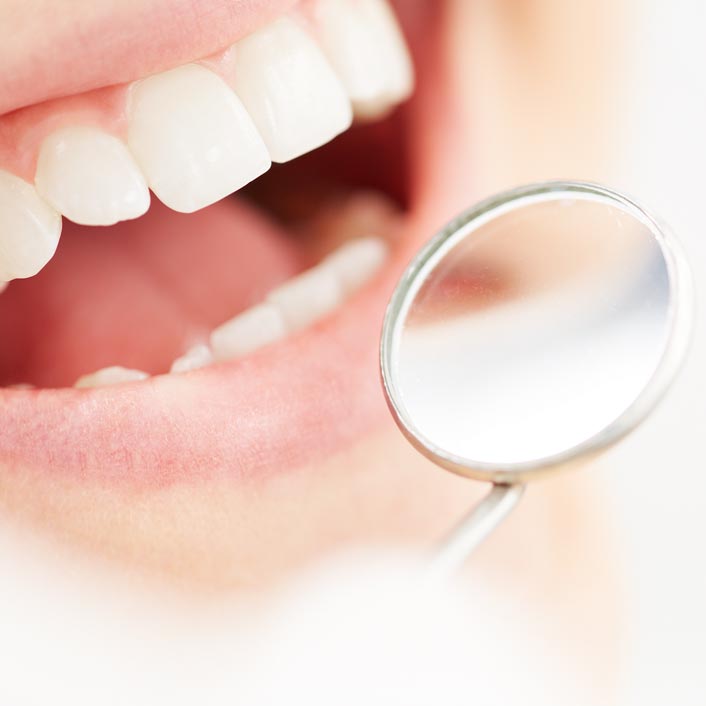
A dental cleaning is a professional cleaning you receive from a dentist or dental hygienist. Most dental
→ read more

A dental cleaning is a professional cleaning you receive from a dentist or dental hygienist. Most dental cleanings take only 25 to 30 minutes. Cleanings should be performed every six months to prevent excessive plaque buildup. Plaque left untreated can lead to unhealthy gums and tooth decay. A routine dental cleaning should include scaling, root planing and polishing.
Scaling and root planing is the process of removing plaque and tartar from all tooth surfaces with a variety of methods, depending on the amount of plaque and tartar. Dental hygienists traditionally perform scaling by hand. However, new and advanced technology has led to more modern methods such as electric scalers. This sophisticated tool allows dental cleanings to be performed more efficiently and in less time. Both electric and manual scaling methods can be combined to achieve the best results. Polishing completes the cleaning, making the surface of the teeth smooth and minimizing future plaque build-up.
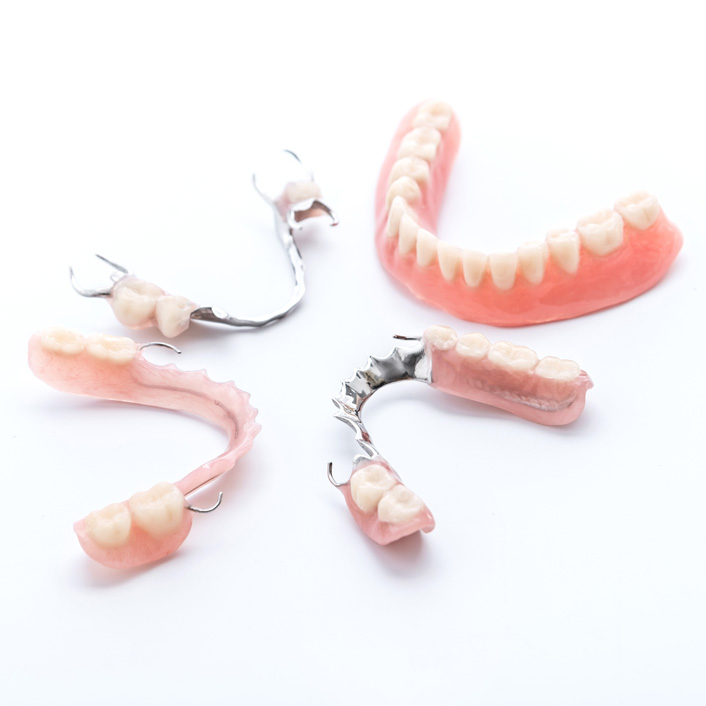
A denture is a removable replacement for missing teeth and surrounding tissues. There are two types of dentures
→ read more

A denture is a removable replacement for missing teeth and surrounding tissues. There are two types of dentures available: partial dentures and complete dentures. Partial dentures are used when some natural teeth remain and complete dentures are used to replace all teeth. Dentures are made to resemble your natural teeth, so there should be no noticeable change to appearance. In fact, dentures may even improve a smile!
Complete Dentures – This restoration method is used to restore smile and mouth function if all teeth have been lost. The dentures are custom created and natural looking. They are fit in the patient’s mouth to take the place of the original teeth. Complete dentures are generally removable and may require adjustments in order to create a proper fit with the gums and mouth.
Partial Dentures – A removable partial denture is used when one or more natural teeth still remain in the upper or lower jaw. Made of replacement teeth attached to a pink or gum-colored plastic base, partials help restore better functionality to the mouth. As with complete dentures, it is possible to have more permanent option cemented into place.
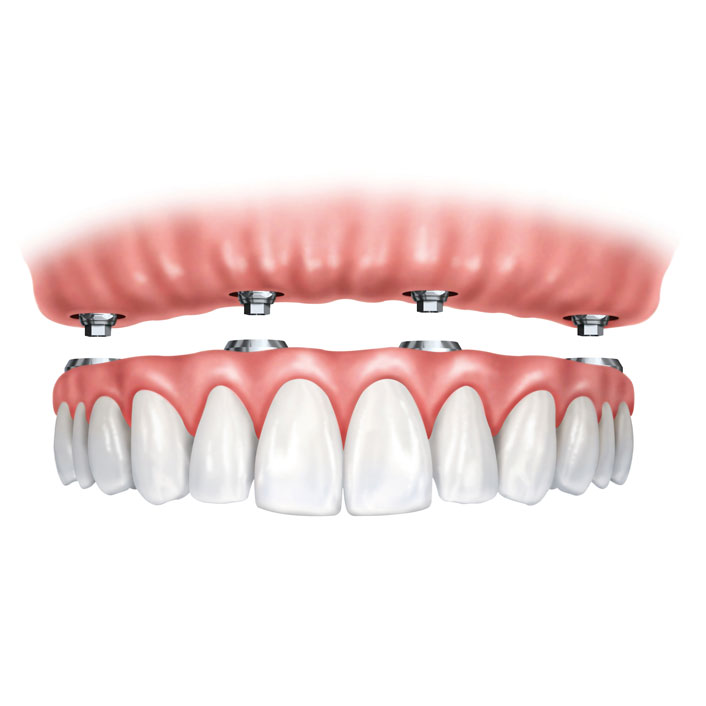
Tired of your lower denture “floating” in your mouth?
→ read more

Tired of your lower denture “floating” in your mouth? Want to eat an apple without being embarrassed of your dentures? You are not alone!
50% of Americans over the age of 50 wear partial or full dentures and many are dissatisfied with the fit of their lower denture.
An implant supported denture is not supported by your gums, but rather by implants. The connection of the implants to the denture makes it more retentive and stable.
Ask Great Day Dental how we can improve the fit of your dentures and feel the freedom to eat anything you want again.

Dental emergency? We’re here for you! Severe pain or discomfort in the jaw, gums or teeth can often become
→ read more

Dental emergency? We’re here for you!
Severe pain or discomfort in the jaw, gums or teeth can often become unbearable. At Great Day Dental we offer same-day emergency dental services and appointments to provide immediate relief and long term dental solutions!
If you are suffering from severe pain or discomfort don’t hesitate to call us at (608) 221-3326! Our accommodating team will help you schedule an emergency exam as soon as possible. We’re here to help!
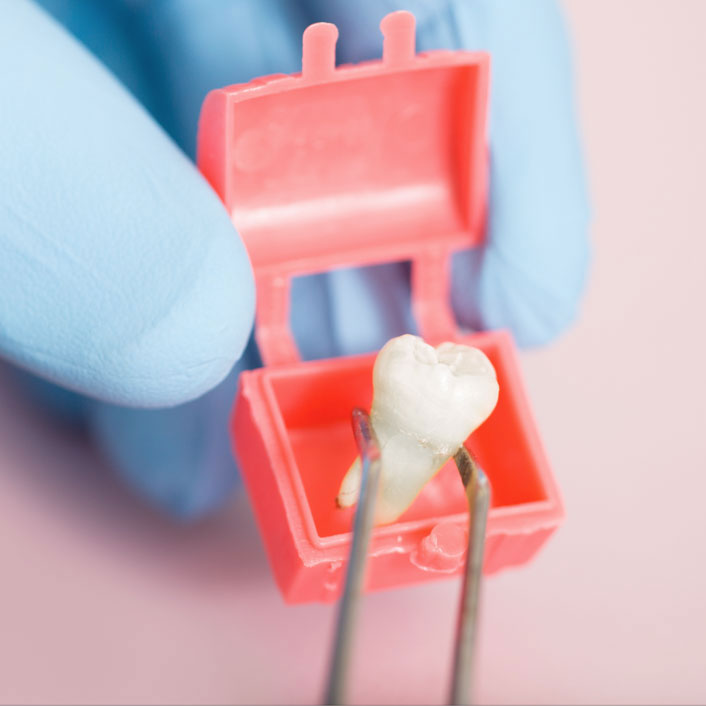
Good oral hygiene is a must. The loss of a single tooth can have major impact on overall oral health
→ read more
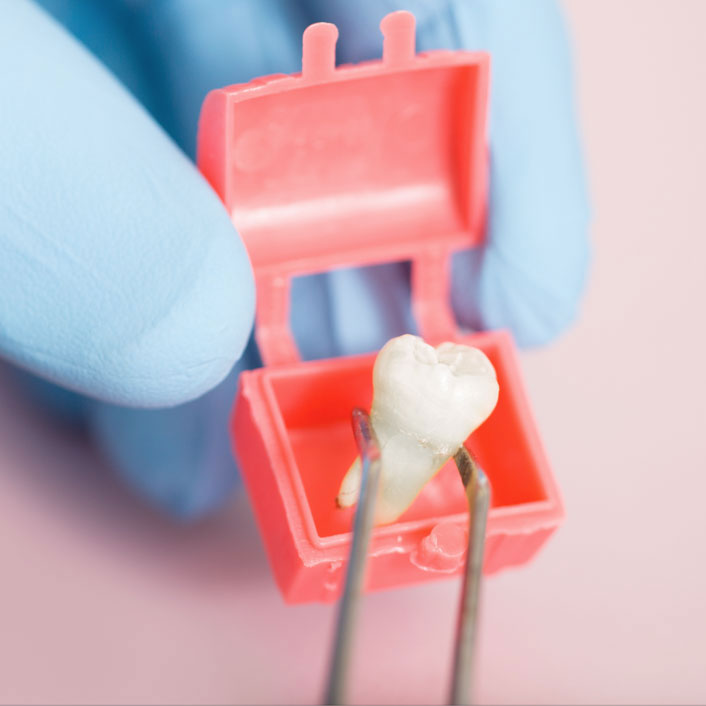
Good oral hygiene is a must. The loss of a single tooth can have major impact on overall oral health and appearance. Although dentists will use every measure to prevent tooth loss, there are still some occasions when a tooth needs to be extracted. A tooth may need to be extracted if the following occurs:
The dentist may suggest an extraction after careful examination and treatment. X-rays are used to understand the shape and position of the tooth and surrounding bone before extracting the tooth. Based on the degree of difficulty, a dentist may refer you to an oral surgeon.
A certain amount of pain and discomfort is to be expected following an extraction, but it can be minimized with painkillers and ice packs applied to the face for 15 minutes at a time. Discomfort should lessen within three days to two weeks.
If you experience prolonged or severe pain, swelling, bleeding or fever, call our office immediately.
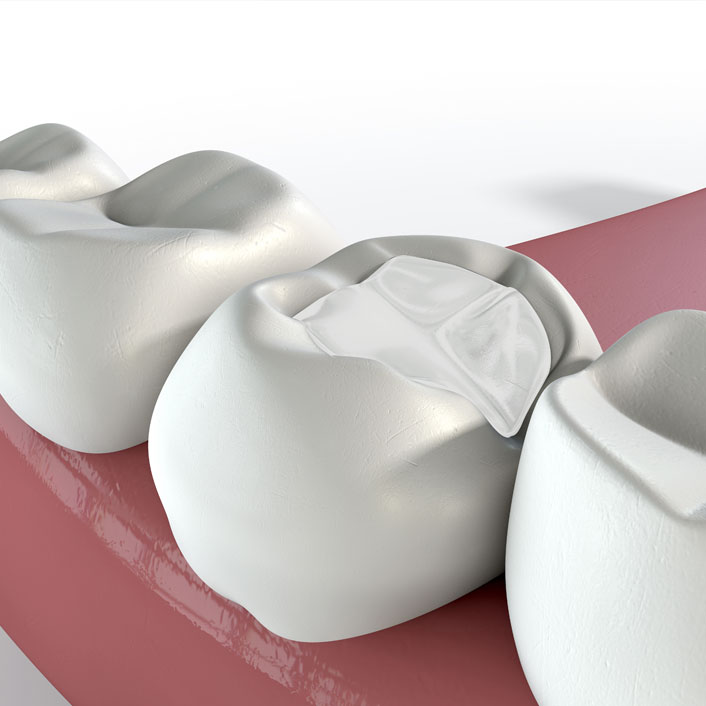
A filling is a way to restore a tooth decayed tooth back to its normal shape and function. If you have
→ read more

A filling is a way to restore a tooth decayed tooth back to its normal shape and function. If you have a tooth that requires a filling, the dentist will first remove the decayed tooth material, then clean the affected area and fill the cleaned-out cavity with a filling material. This filling will help prevent further decay by closing off any cracks or spaces where bacteria might enter. There are a variety of filling materials available including gold, silver, plastic and porcelain. We will work with you to determine which material is best for you, depending on the extent of repair, the location of the filling and the cost. Each of the filling materials is briefly explained below:
Amalgam (silver) fillings are a more inexpensive choice and are also well-tolerated. However, due to their dark color, they are more noticeable than porcelain or composite restorations and are not recommended for fillings in very visible areas such as front teeth.
Composite (plastic) resin fillings are custom-made to the exact color of the patient’s teeth, creating a more natural appearance. While these white fillings may be less noticeable than other materials, they usually only last between 3 and 10 years. They may not be ideal for larger fillings as they may chip or wear over time. They can also become stained from coffee, tea or tobacco.
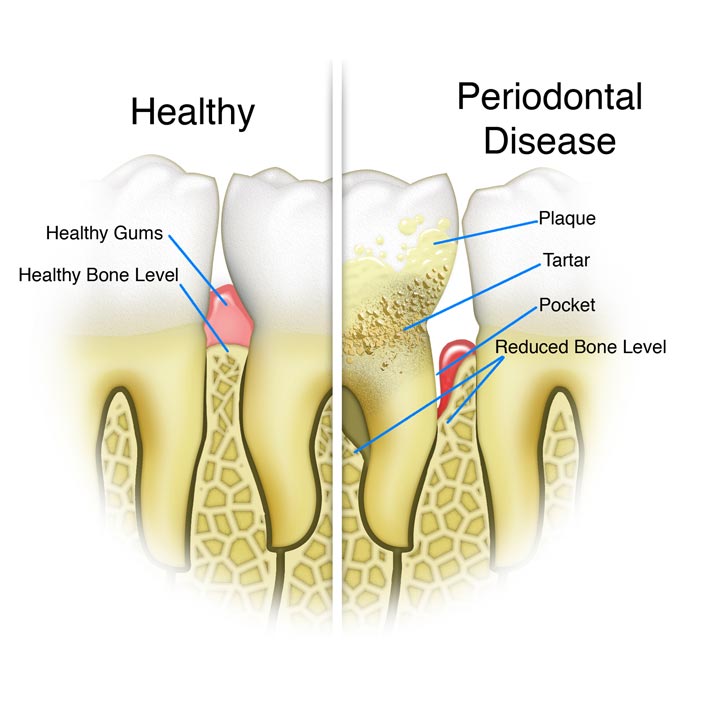
It’s estimated that more than half of U.S. adults have gingivitis. Gingivitis, in some cases can lead to
→ read more

It’s estimated that more than half of U.S. adults have gingivitis. Gingivitis, in some cases, can lead to periodontitis (gum disease) and host of other health problems.
Gum disease can cause bleeding, swelling, bad breath, pain, receding gums and tooth loss. But it doesn’t always stop there. You oral health is the beginning point for your whole body’s health and wellness. It is imperative that we stop problems before they even start!
Gum disease causes a buildup of bacteria in deep pockets between the teeth and gums. That bacteria can transfer to your bloodstream when gums bleed, putting you at a much higher risk to develop the following health problems:
Periodontal treatment typically involves containing the infection through deep cleaning like scaling and root planing, clearing buildup at the root of the teeth. The dentist may also suggest specific toothpastes and mouth rinses. We may also prescribe antibiotics to fight infections. Surgery is required for the most severe cases.
We examine you for gum health at every 6-month check-up. If you have been experiencing any symptoms like bad breath, bleeding or tender gums, please let us know. We will discuss what is the best form of treatment to restore your gums to optimum health.
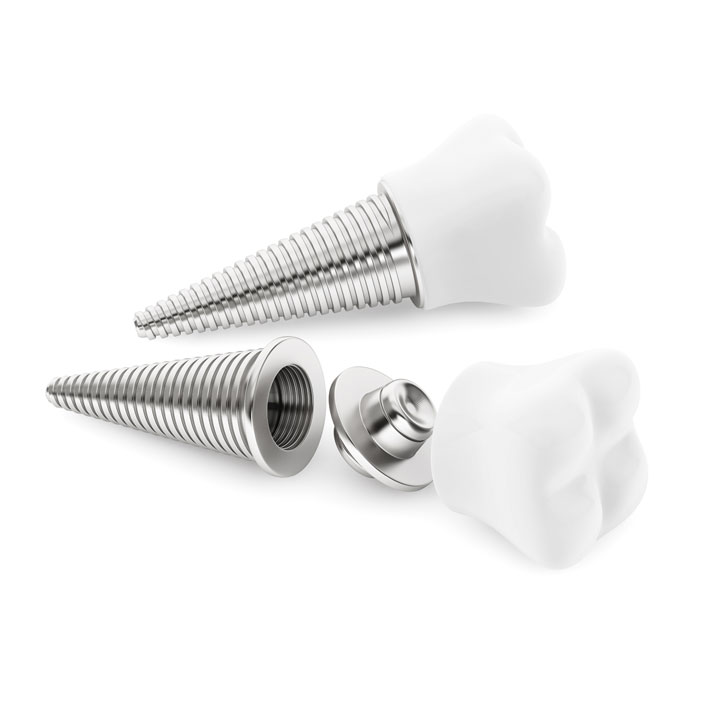
A dental implant is an ideal tooth restoration for people who are missing one or more teeth
→ read more

A dental implant is an ideal tooth restoration for people who are missing one or more teeth for reasons like injury or periodontal disease. To begin the implant process, a metal post is surgically positioned into the jaw. This post will act as a permanent “root” for the implanted tooth. Once it is in place, the surrounding bone and tissue needs time to heal.
Implant placement requires special training, as it is a surgical procedure. Our team is highly-trained in implant placement to meet your dental needs.
Implants require healthy gums and adequate bone. A patient must also be committed to excellent oral hygiene and regular dental visits, as these are critical to the long-term success of dental implants.
Please set up a consultation for this comprehensive procedure.
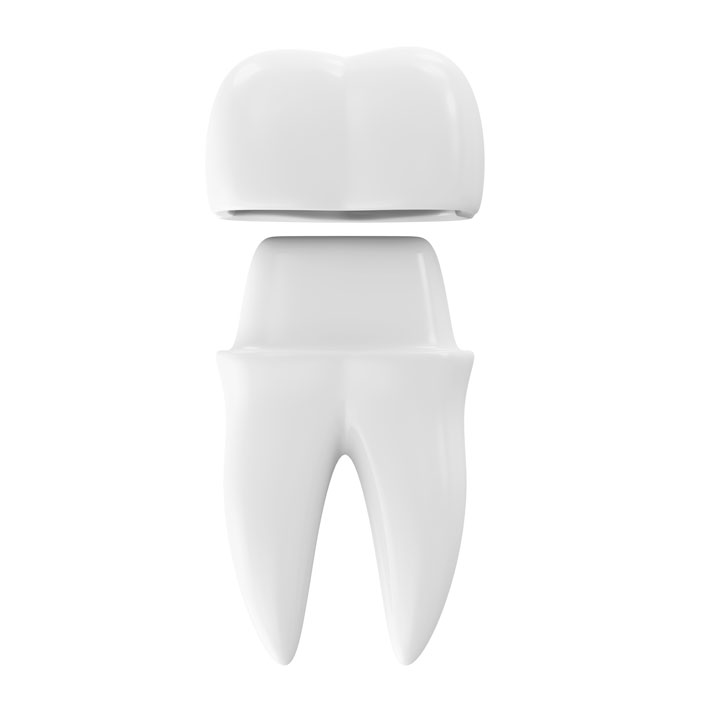
An implant crown is similar to a crown on a natural tooth.
→ read more
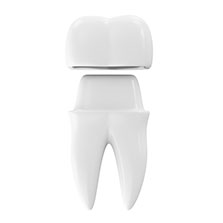
An implant crown is similar to a crown on a natural tooth. It is made from the same material, but is fabricated in a specific way to be compatible to your implant.
Having your implant crown placed is the last step in the implant process. Great Day Dental ensures that all your implant procedures are done in our office from start to finish by highly trained dentists.
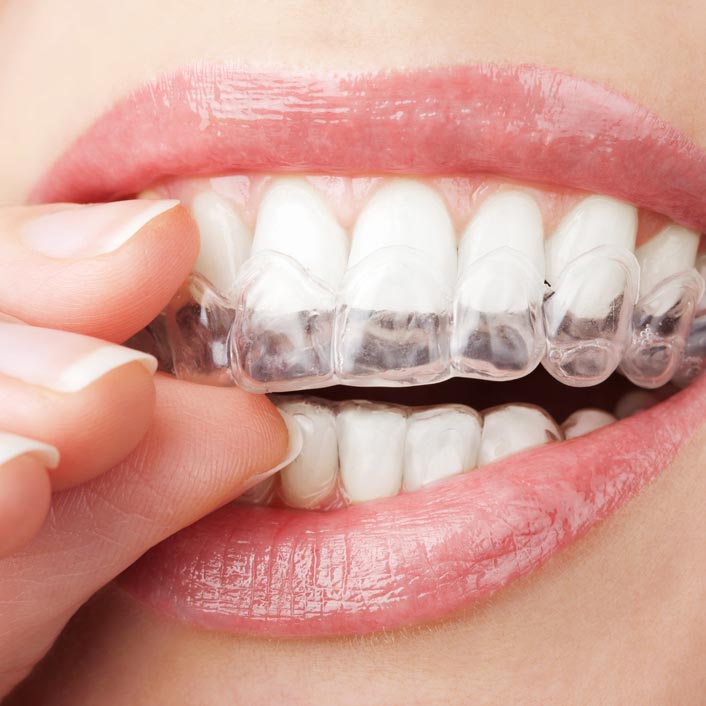
Invisalign is an attractive alternative to traditional metal braces. It is a series of clear, custom-fit removable
→ read more
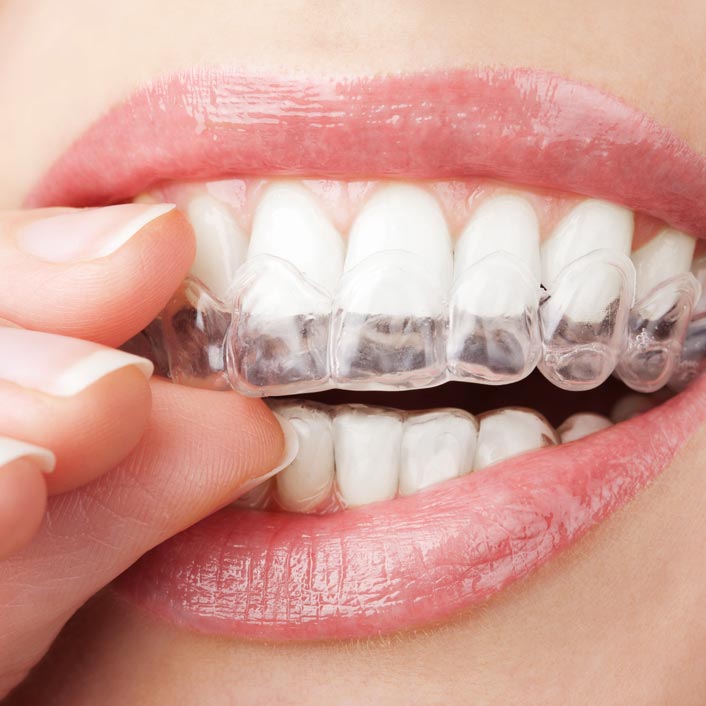
Invisalign is an attractive alternative to traditional metal braces. It is a series of clear, custom-fit removable mouth trays that apply a controlled amount of force to your teeth to slowly straighten them. The system provides the same beautiful results as traditional braces, but they are virtually invisible. Because Invisalign trays are removable, they can be taken out while eating, drinking, brushing and flossing.
The Invisalign system begins in the dentist or orthodontist’s office with taking molds to design your trays. Patients switch trays every two weeks to gradually shift the teeth. The system requires a visit to the office every six weeks so that treatment can be monitored. Once treatment is complete, a patient will likely be given a retainer to maintain the smile. The cost of Invisalign varies according to the complexity of the case. Insurance policies generally cover Invisalign to the same extent that they cover traditional braces.
Contact us for an Invisalign consultation.

Implants are one of the best tooth replacements available. However, proper bone
→ read more

Implants are one of the best tooth replacements available. However, proper bone support is needed to retain the implant and to obtain a good prognosis. Bone grafting can be done after a tooth has been extracted to prevent collapsing of the bone. It is also used to push up the sinus in order to create enough solid bone to place an implant.
These are usually surgical procedures that are covered with antibiotics and pain meds.
Ask us if bone grafting can be done for you to prepare your space for an implant!
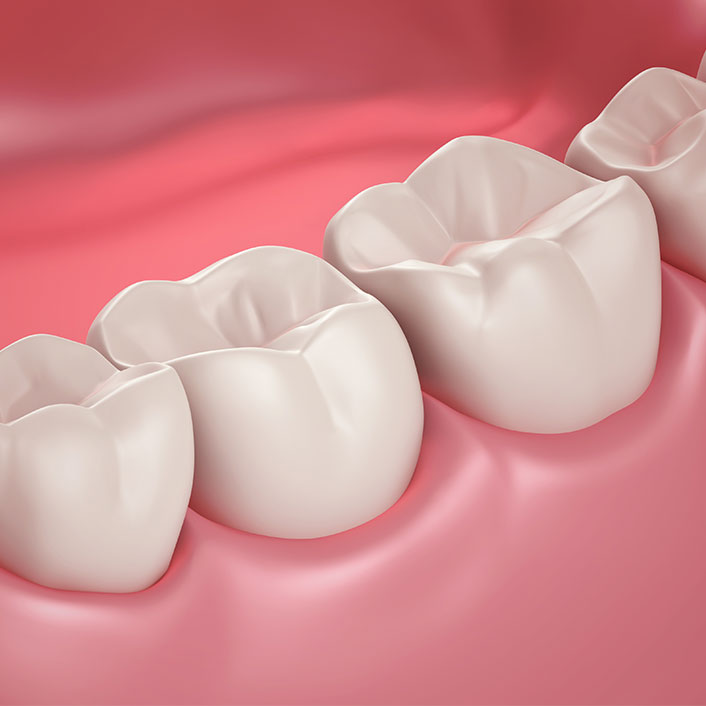
Gum recession is the process in which the tissue that surrounds the teeth pulls
→ read more

Gum recession is the process in which the tissue that surrounds the teeth pulls away from a tooth, exposing more of the tooth's root. Gum recession is a common dental problem; it affects 4% to 12% of adults and often goes unnoticed until it becomes more severe.
Many people don't even notice that their gums have receded, because it is a gradual process. However, over time, an exposed tooth root can not only look ugly, but can cause tooth sensitivity, especially when eating cold or hot foods. Eventually, gum recession, if not treated, can cause tooth loss. To repair the damage and prevent further dental problems, a gum tissue graft may be needed.
Many times gum tissues need to be thickened and strengthened before an implant can be placed. Thickening the gum tissue prevents future recession around the implant and can sometimes create a more aesthetic appeal for the implant.
Your dental team at Great Day Dental will ensure that all the proper procedures have been done prior to implant placement to ensure that your implant is a success.

Custom-designed mouth guards are made of flexible plastic and molded to fit the shape of your teeth.
→ read more

Custom-designed mouth guards are made of flexible plastic and molded to fit the shape of your teeth. Mouth guards are recommended to protect the jaw, tongue, cheek lining and teeth during physical activity and sports such as boxing, football, basketball, or other activities where your mouth might get hit. Guards generally last 3-10 years.
Custom-made oral appliances can also be used as part of treatment for conditions like sleep apnea and TMJ disorders. In general, plastic appliances can be used to correct a variety of problems.
If you are active in athletics or experiencing any concerning experiences with your mouth, teeth, or jaw, please let us know. If any kind of guard or appliance is a good option for you, we will take an impression of your teeth to create a custom-fit product for your specific needs.
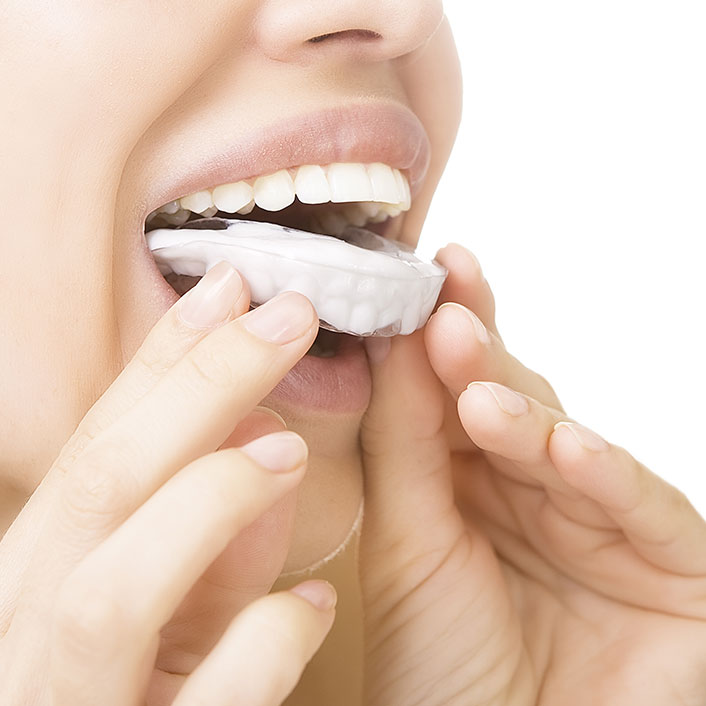
Teeth clenching and grinding can damage teeth and be harmful to one’s long-term oral health.
→ read more
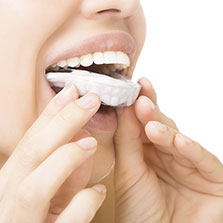
Many adults are affected by bruxism, more commonly known as teeth grinding or clenching, individuals may be affected by a variety of symptoms including worn tooth enamel, recessed gums, increased tooth sensitivity, jaw pain, earaches and headaches.
If you have any of these symptoms, your dentist can fabricate a hard, custom made appliance for you to wear at night.
There are many benefits to a night guard including reducing headaches, improving posture and breathing, reducing stress and tension, and avoiding future wear fracture of your teeth.
Ask us if a night guard will alleviate your symptoms and improve your quality of life.

Bonding is a conservative way to repair slightly-chipped, discolored or crooked teeth, often for
→ read more

Bonding is a conservative way to repair slightly-chipped, discolored or crooked teeth, often for cosmetic purposes. The process comprises placing a white filling on your tooth to improve its appearance. The filling "bonds" with your teeth, and because it comes in a variety of tooth-colored shades, it closely matches the appearance of your natural teeth.
Bonding can also be used in place of regular amalgam fillings. Many patients prefer bonded fillings, because the white color is much less noticeable than the silver of the amalgam fillings. Bonding fillings can be used on front and back teeth, depending on the location and extent of tooth decay.
Bonding is less expensive than other cosmetic treatments and can usually be completed in one visit to our office. However, bonding can stain and breaks more easily than other cosmetic treatments like porcelain veneers.
If your bonding does break or chip, please let us know. We can generally patch or repair bonding in one visit.
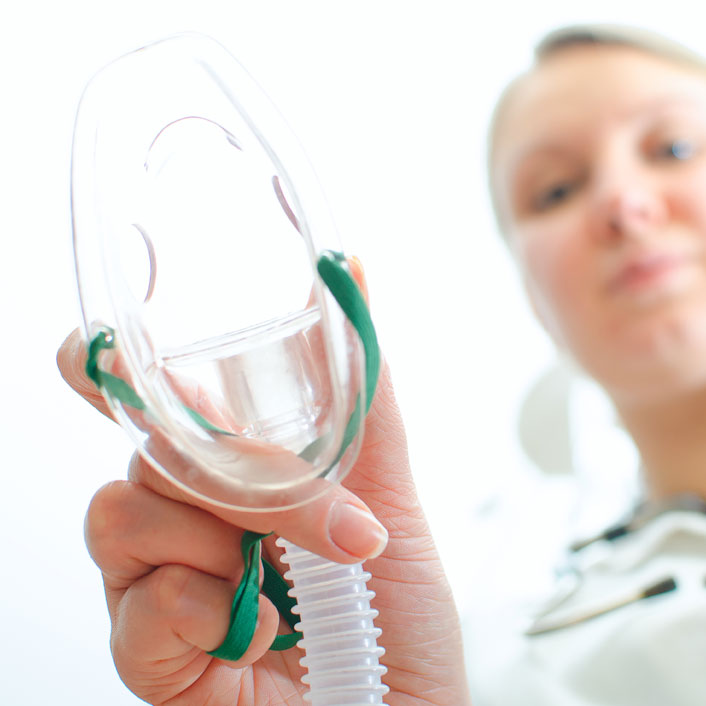
Also known as "laughing gas," is commonly used to make treatment more comfortable. The nitrous oxide is inhaled
→ read more

Nitrous oxide sedation, also known as "laughing gas," is commonly used to make treatment more comfortable. The nitrous oxide is inhaled through a mask and produces a state of relaxation. Local anesthetic will be administered in conjunction with nitrous oxide to eliminate pain. Nitrous oxide is designed to make procedures easier for nervous patients and has been effective for many years.
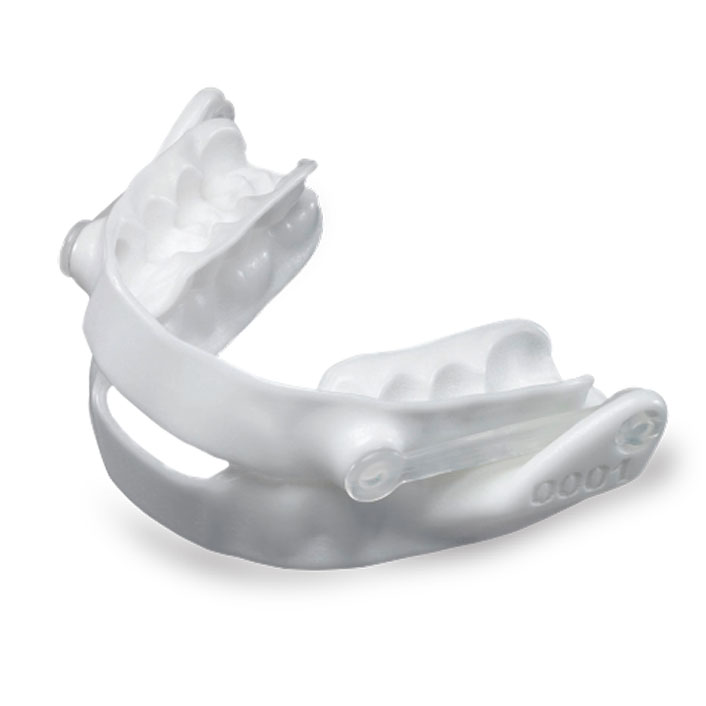
Oral sleep appliances are used for a variety of reasons, including correcting jaw function, aligning teeth...
→ read more
Oral sleep appliances are used for a variety of reasons, including correcting jaw function, aligning teeth and preventing damage due to nighttime clenching and grinding. If you are in need of an oral appliance, we can help you determine which appliance will provide the most comfort while delivering the best results.
Night Guards - Night guards can protect your teeth and jaw joints from any potential damage caused in your sleep, including nighttime clenching and grinding. Symptoms of nighttime clenching and grinding include tightness and stiffness in the shoulders, headaches, earaches, sleep disruption, tooth pain, stiffness in the jaw joint, and muscle pain.
Oral Appliance Therapy for OSA - This small plastic device is customized for your mouth and fits like a sports mouth guard or orthodontic retainer. Worn while you are sleeping, it helps prevent the collapse of the tongue and soft tissues in the back of the throat, keeping the airway open during the night and promoting adequate air intake. Oral appliances may be used alone or in combination with other treatments for sleep-related breathing disorders, such as weight management, surgery or CPAP.
Herbst Appliances - The Herbst is a type of oral sleep appliance directed at improving jaw functionality during sleep. The appliance is built with two metal bars that act as arms connecting the top and lower guards. These bars work to open the throat and nasal passage, making it possible for patients to breathe easily through both their mouth and nose while sleeping.
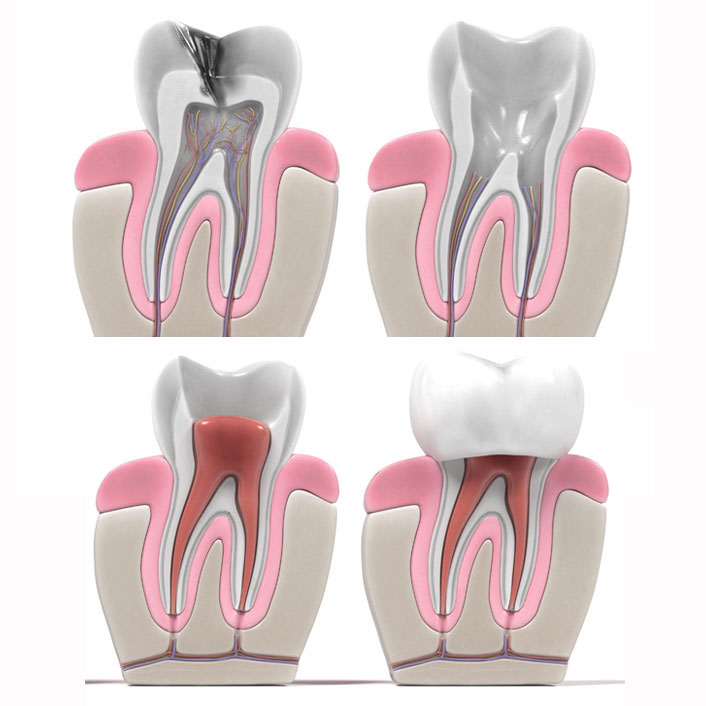
also referred to as root canal therapy or endodontic therapy, is used to save an infected or damaged tooth
→ read more

Root canal treatment, also referred to as root canal therapy or endodontic therapy, is used to save an infected or damaged tooth and avoid having to remove it. A root canal becomes necessary when a neglected cavity reaches all the way to the pulp at the center of the tooth, causing the pulp to become infected. Regular cleanings and checkups detect and prevent problems early on.
Trauma can also cause deep damage to the nerve of a tooth. Once this occurs, the pulp becomes infected, and it begins to eat away at the surrounding bone (this is called an abscess). By the time the pulp is infected it must be treated, and cannot heal on its own. It can even weaken the entire immune system, making it very dangerous and painful.
Symptoms of infected pulp may include sensitivity to hot/cold or sweets, pain, swelling, pain with biting or pressure, and a bad taste in the mouth. Sometimes, however, there are no symptoms, and you are unaware of any problem until a checkup.
A root canal is performed to clean out the infected tooth pulp and disinfect the canals of the tooth. The only other treatment would be to extract the tooth. Once the infection is resolved, the canal(s) is filled to prevent any further infection. Crowns are usually recommended to cover and restore a tooth after root canal therapy.

are a common preventive treatment in dentistry. Some teeth have fine grooves or pits that accumulate
→ read more
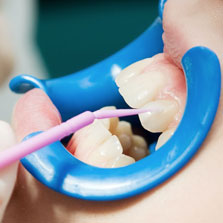
Sealants are a common preventive treatment in dentistry. Some teeth have fine grooves or pits that accumulate plaque, not because the person doesn't brush, but because the grooves are too narrow to allow even one bristle into them. When plaque accumulates, it can lead to cavities and other types of tooth decay. To apply sealants, a plastic material is brushed onto the tooth, filling these narrow grooves and preventing the cavity-causing buildup. Sealants make healthy teeth possible.

When it’s time for your son or daughters first dental appointment, our dental team
→ read more

When it’s time for your son or daughters first dental appointment, our dental team has two important goals to achieve. First, we want to do everything we can to create a fun, enjoyable atmosphere, and second, we want to learn about their unique needs so dental care with us is as personalized as possible. Depending on the child’s age, we will perform a dental cleaning, evaluation, and x-rays. Then, we’ll share the results with you, discussing any developmental concerns or damage we see. We’re always happy to answer questions and concerns about specific treatments.
Just like with adults, we’d like to see your little one every six months for preventive care. Being able to locate and treat dental problems at the earliest possible stages protects children’s smiles and saves them from discomfort. These regular appointments also allow our staff to teach your child about effective brushing and flossing. Maintaining great oral health is not only good for the mouth, but good for the body as well!

are a cosmetic dental procedure in which a thin layer of porcelain or composite material is placed over the
→ read more

Veneers are a cosmetic dental procedure in which a thin layer of porcelain or composite material is placed over the outside of the tooth. They are used to improve aesthetics or help with tooth damage. Veneers are usually only performed on the front part of the teeth that are visible when talking or smiling. The procedure can be direct or indirect.
The direct technique usually involves placing composite resin on the outside of the tooth using bonding. Because of that, the direct technique is usually referred to as bonding. The indirect technique usually involves two appointments because the veneers are fabricated at a dental laboratory. At the first appointment the teeth are prepared, impressions are taken, and the teeth are given a temporary covering. The veneers are back from the laboratory after two or three weeks. The temporaries are removed, and the veneers are bonded to the teeth.The laboratory-fabricated veneers are usually made using porcelain or pressed ceramic, and are aesthetically pleasing.
The advantage of veneers versus crowns is that much less of the tooth material has to be removed, and the procedure is generally less uncomfortable. Veneers are not recommended for patients who have large fillings or little tooth structure. They are also typically recommended for the restoration of front teeth.

is a popular procedure to make your teeth whiter and brighter, and therefore more attractive. Bleaching can be
→ read more

Tray whitening is a less-expensive and convenient at-home whitening treatment. The results are more gradual. An impression is taken at the dentist’s office in order to create a customized clear tray. Trays are generally ready within a few days, depending, and the patient must follow instructions for how to apply the gel in the trays and how often to use it. Maximum whitening results and a dazzling smile are achieved at the end of the set treatment period. An occasional treatment can be used to maintain the new smile.
Whitening strips can be available at the local store or at dental practices. The dentist will have the best recommendations for your needs.
Ask about our whitening options! Please consult us about use of over-the-counter whitening treatments.
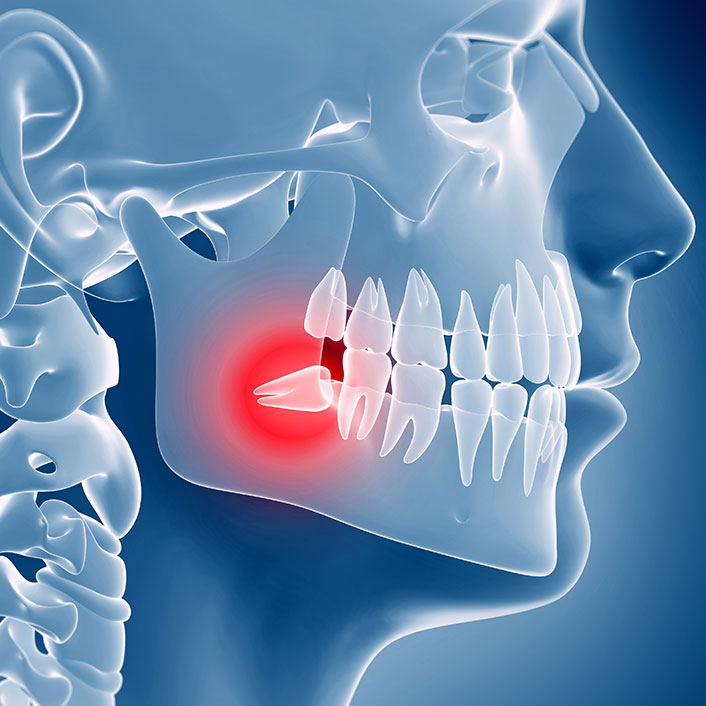
are the last molars, or "third molars" that develop on each side of the jaw. They usually emerge in the back of
→ read more

Wisdom teeth are the last molars, or "third molars" that develop on each side of the jaw. They usually emerge in the back of the mouth between the ages of 16-20.
Wisdom teeth are a valuable asset to the mouth when they are healthy and properly positioned. Often, however, they cause problems and require removal. When the jaw isn't large enough to accommodate wisdom teeth, they can become impacted. Impacted wisdom teeth may grow sideways, emerge only part way through the gum or remain trapped beneath the gum and bone.
A wisdom tooth extraction is a relatively routine procedure. After the tooth (or teeth) is removed, the patient is given gauze and bites down softly for a recommended amount of time to limit any bleeding. Some pain and swelling may occur, but it will usually go away after a few days.
Please call our office if, after following post-op instructions, you have prolonged or severe pain, swelling, bleeding or fever.
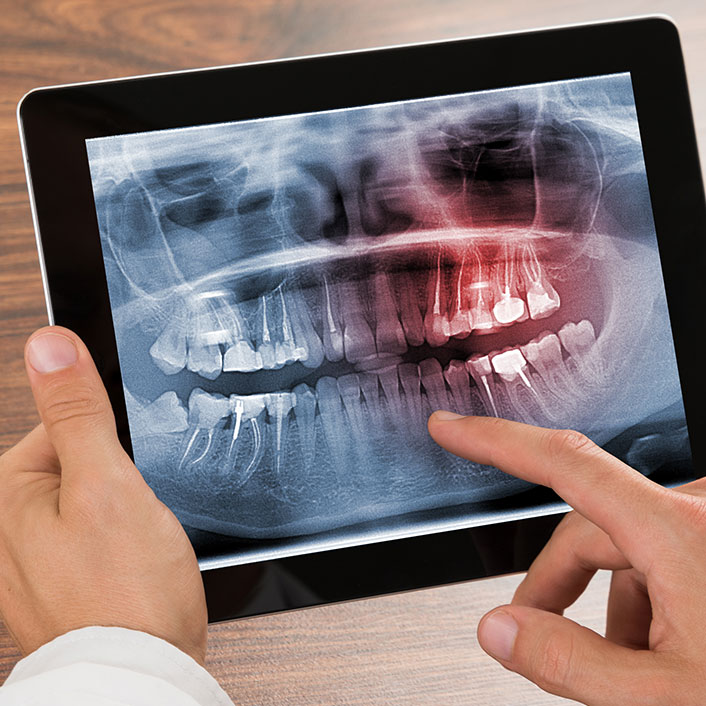
Digital radiography uses an estimated 40-90 percent less radiation than conventional film x-rays. Digital x-rays
→ read more
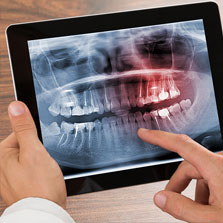
While we can view many aspects of your oral health with a visual examination, there are some structures inaccessible to the naked eye. That’s why x-rays are crucial to diagnosis and treatment. The x-rays we capture are instantly visible on a nearby monitor, and they can be magnified, color-coded and transferred digitally for patient convenience. They’re also safer for the environment and you with radiation exposure reduced by up to 90%.

Many offices utilize electronic claims processing.
→ read more

Many offices utilize electronic claims processing. This means that rather than being sent through the mail, a dental claim is sent electronically to an insurance company with the click of a button. We can submit information more efficiently and with fewer errors. This benefits patients because the turn-around time on claims is faster, and fewer claims are returned or denied.
We are happy to submit your dental claims to your insurance company on your behalf. Please let us know if you have any questions about the e-claim process.
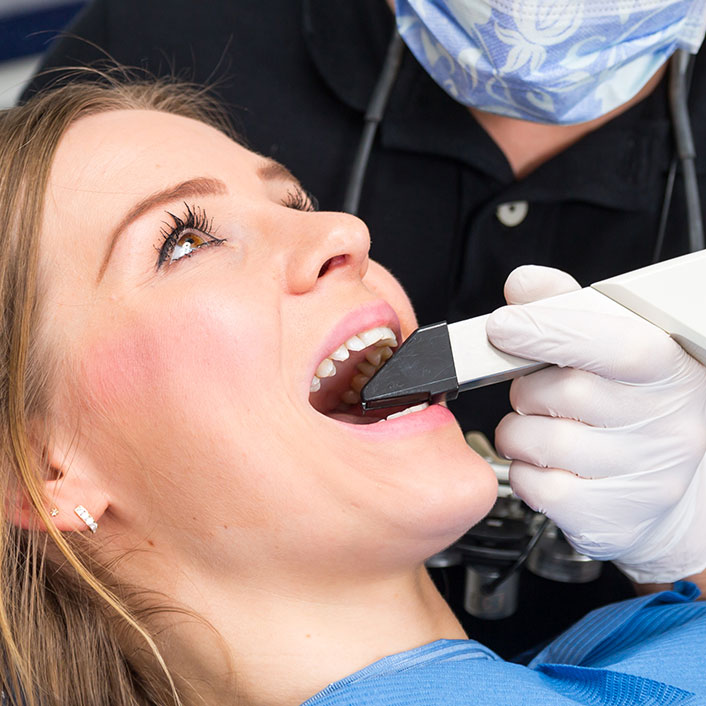
If you’ve ever had an impression taken, you know that the process is messy.
→ read more
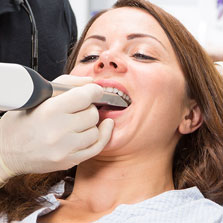
If you’ve ever had an impression taken, you know that the process is messy. Thankfully, we offer the latest digital impression technology at Great Day Dental which makes this process much easier and more comfortable. We capture highly detailed data about your smile in just minutes. This information transfers instantly to our computer so that we can get to work on designing your new, quality restoration.
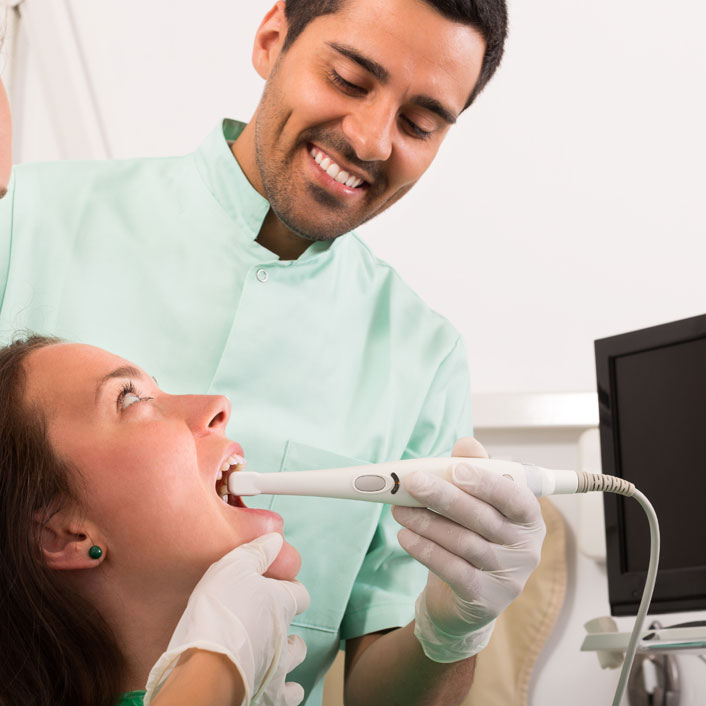
cameras about the size of a pen, help dentists see the condition of teeth and gums more clearly. This advanced
→ read more
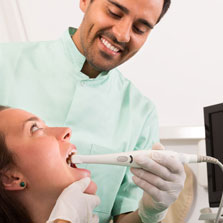
Intraoral cameras, cameras about the size of a pen, help dentists see the condition of teeth and gums more clearly. This advanced technology allows us to zoom in on small diseased areas, cracks, chips and worn metal fillings to provide a more detailed view. The full-color images are sent to a computer screen, making it easy to see and diagnose dental problems much earlier than with traditional dental technology. Patients are also able to watch the whole process because the images are displayed on screens in treatment rooms.

is an important advancement in dental technology, treating a wide range of dental and cosmetic problems from cavities
→ read more

Have you ever noticed that your gums are uneven around your teeth or that you have “shorter” teeth? With the use of laser technology, your gums can be contoured and leveled with minimal pain and no bleeding or sutures. Contouring the gums will give you a more youthful smile and in some cases may be able to lengthen shorter teeth.
Laser therapy is also used to treat periodontal disease, remove unwanted tissues in the mouth and help cure cold sores faster.
Consider how laser therapy could benefit you!

means more efficiency and more accuracy. An office that has “gone digital” records x-rays and charting with
→ read more

Paperless charting means more efficiency and more accuracy. An office that has “gone digital” records x-rays and charting with the aid of the computer and keeps all patients’ dental records electronically. Additionally, it cuts back on paper use. With traditional paper charting, information can be lost in translation from doctor to hygienist to assistant. Even handwriting differences and coding make the charts look different. The computer eliminates this problem by standardizing charting methods, making it easy to understand dental charts, view up-to-date information and keep records accurately. When needed, this method also allows dental offices to more easily share information with other healthcare providers.
If you have any questions in regards to your records with us, please let us know.

You deserve to be in the loop when it comes to your dental care. There are a variety of computer programs available
→ read more

You deserve to be in the loop when it comes to your dental care. There are a variety of computer programs available to help patients better understand conditions, procedures and treatment options. Our office invests in patient education software because we want you to feel confident in every dental decision you make. This investment helps us clearly communicate--and it helps you learn more.
Popular programs include GURU and DentalMaster, among many others. If you have any questions about the program we use, we’re happy to point you to the website. If you have any further questions about your oral health and procedures, don’t hesitate to ask us.

is a new medical technology that allows doctors to reverse the effects of anesthetics, bringing patients back
→ read more

OraVerse & Anesthetic Reversal
OraVerse is a new medical technology that allows doctors to reverse the effects of anesthetics, bringing patients back to normal sensation twice as fast. Ask us about what OraVerse can do for you!